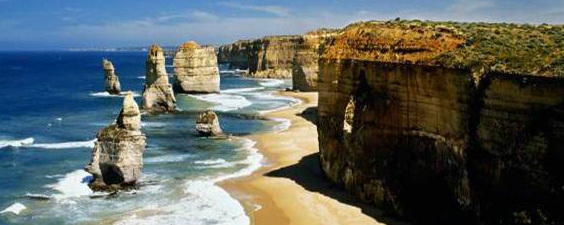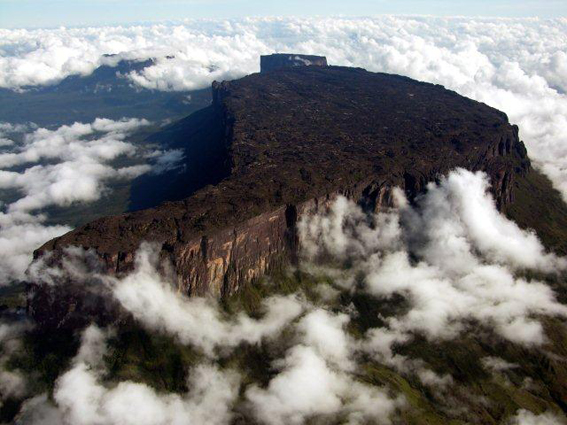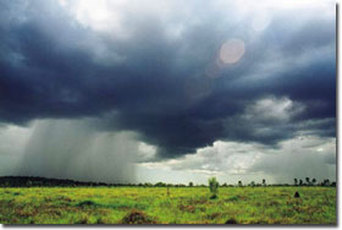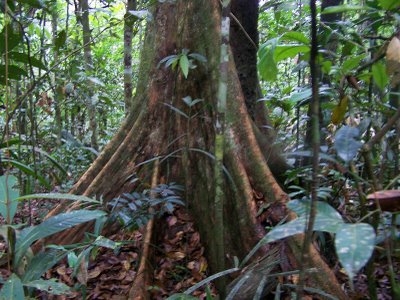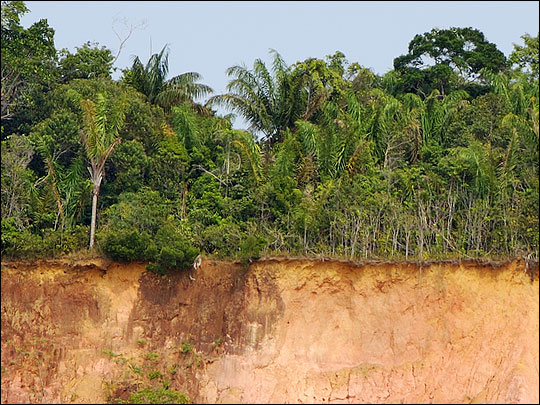NATURAL ENVIRONMENTS
What makes up a Natural Environment?
Natural environments are made up of four main elements
Relief: the height and shape of the land and how it has formed over time.
Climate: rainfall, temperature, sunshine, wind, humidity.
Soils: weathered or eroded material produced from rocks. Soil can be fertile/infertile, well-drained/poorly drained.
Vegetation: the plant cover of an area.
Relief: the height and shape of the land and how it has formed over time.
Climate: rainfall, temperature, sunshine, wind, humidity.
Soils: weathered or eroded material produced from rocks. Soil can be fertile/infertile, well-drained/poorly drained.
Vegetation: the plant cover of an area.
Land Building Processes
Faulting - Diagrams of faulting and Earthquakes in New Zealand today
Folding - Animation
Volcanic Activity - watch the videos below:
Folding - Animation
Volcanic Activity - watch the videos below:
Land Modifying Processes
1. WEATHERING
This is the breaking off and wearing away of the land by rain, ice, wind etc.
Animation of fluvial erosion
2. TRANSPORTATION
The material that has been worn away is transported, usually down-slope.
Animation of fluvial transportation
3. DEPOSITION
The material is then deposited and forms new landscapes e.g. a river delta is formed when eroded material is carried down a river and deposited at the river mouth.
This is the breaking off and wearing away of the land by rain, ice, wind etc.
Animation of fluvial erosion
2. TRANSPORTATION
The material that has been worn away is transported, usually down-slope.
Animation of fluvial transportation
3. DEPOSITION
The material is then deposited and forms new landscapes e.g. a river delta is formed when eroded material is carried down a river and deposited at the river mouth.
How the Amazon formed and changes over time
You have 3 diagrams in your write-on-notes that you have labelled in class. Add to the diagrams with information from this slideshare - click here
Practice drawing the diagrams and then annotate them to better understand this focus question.
Practice drawing the diagrams and then annotate them to better understand this focus question.
Characteristics of the Amazon
The 4 areas we are studying are the Andes foothills, the Highlands, the Amazon Basin and the Varzea.
Click here to see animations of Convectional rainfall (occurs in the Amazon) and Orographic/Frontal Rainfall (occurs in the Andes).
Click here to see how Freeze-Thaw works.
Click here to see how the ITCZ works.
Click here to see animations of Convectional rainfall (occurs in the Amazon) and Orographic/Frontal Rainfall (occurs in the Andes).
Click here to see how Freeze-Thaw works.
Click here to see how the ITCZ works.
ARTICLES from class to do with the Characteristics of the Amazon.
Click the articles below and make your own notes under the correct headings in your book.
Click the articles below and make your own notes under the correct headings in your book.
| article_what_is_the_influence_of_rivers_on_amazonian_soils.pdf | |
| File Size: | 1158 kb |
| File Type: | |
| article_what_is_the_nature_of_tropical_rain_forests.pdf | |
| File Size: | 1327 kb |
| File Type: | |
| article_how_does_the_seasonality_of_rainfall_affect_vegetation.pdf | |
| File Size: | 1276 kb |
| File Type: | |
| article_what_types_of_soil_are_there_in_amazonia.pdf | |
| File Size: | 1114 kb |
| File Type: | |
AMAZON Summary Diagram examples
| amazon_summary_diagrams_examples.pdf | |
| File Size: | 5167 kb |
| File Type: | |
How people interact with the Amazon
People are always interacting with the Amazon. Some groups of people's interactions have minimal impact on the Amazon (e.g. indigenous people) and some groups interactions have a large impact on the Amazon (e.g. Cattle Ranchers, Miners).
Use the information on Group 1 (Indigenous People) to add to your notes from class.
Use the information on Groups 2 , 3, 4 and 5 to find out HOW they interact with the Amazon.
Use the information on Group 1 (Indigenous People) to add to your notes from class.
Use the information on Groups 2 , 3, 4 and 5 to find out HOW they interact with the Amazon.
Google Docs Activity - Groups
Use the links below to add information to your group's Google Doc. If you cannot remember your group, there is a list below to remind you. Use these Docs for How people interact with the Amazon, but also How people's perception of the Amazon have changed over time.
GROUP 1 : The Indigenous People - The Yanomami and the Ticuna
Read the article at this website about the Ticuna tribe and this information about the Indigenous people in general.
There are also some videos below to watch.
Think about how they INTERACT with the Amazon.
Read the article at this website about the Ticuna tribe and this information about the Indigenous people in general.
There are also some videos below to watch.
Think about how they INTERACT with the Amazon.
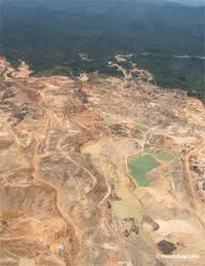
GROUP 2: Mining and Miners
The Amazon has many minerals that people want to mine to make money from.
Watch the videos below and read the information at the different websites to write notes on page 50 in your workbook, about how mining/miners interact with the Amazon. Add diagrams where necessary.
Video of Gold Mining in the Amazon.
The Carajas Mine.
Mining in the Amazon.
Gold Mining in the Amazon.
The Amazon has many minerals that people want to mine to make money from.
Watch the videos below and read the information at the different websites to write notes on page 50 in your workbook, about how mining/miners interact with the Amazon. Add diagrams where necessary.
Video of Gold Mining in the Amazon.
The Carajas Mine.
Mining in the Amazon.
Gold Mining in the Amazon.
|
|
|
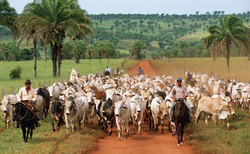
GROUP 3: Cattle Ranching
Cattle Ranching has been one of the main causes of Deforestation in the Amazon. There is a lot of information about Cattle Ranchers and their interaction on the Amazon.
Read the information at the following links to write notes/draw annotated diagrams on page 51 in your work book about how Cattle Ranching interacts with the Amazon.
Article in the Guardian Newspaper.
An article against Cattle ranching.
Cattle Ranching and Deforestation.
Another article from the Guardian Newspape
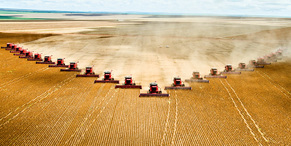
GROUP 4: Soybean Farming
Soybean farming is the latest threat to the Amazon forest.
Below are 4 links to information about soybean farming ihe Amazon, as well as some videos.Read the information at the following links, and from the videos, to write notes/draw annotated diagrams on page 52 in your work book about how Soybean farming interacts with the Amazon.
Soybean farming #1
Soybean farming #2
Soybean farming #3
Soybean farming is the latest threat to the Amazon forest.
Below are 4 links to information about soybean farming ihe Amazon, as well as some videos.Read the information at the following links, and from the videos, to write notes/draw annotated diagrams on page 52 in your work book about how Soybean farming interacts with the Amazon.
Soybean farming #1
Soybean farming #2
Soybean farming #3
|
|
|
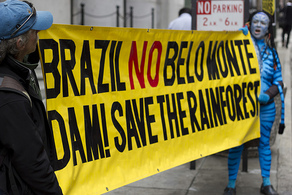
GROUP 5: Environmental Groups
Environmental Groups have been trying to protect the Amazon from Deforestation for a very long time.
The two most well know groups involved in environmental issues in the Amazon are Greenpeace and Amazon Watch. The video's below show what they have been doing, as well as these websites:
Amazon Watch
Greenpeace in the Amazon
How do they INTERACT with the Amazon? Write your answers on page 53 in your workbook.
Environmental Groups have been trying to protect the Amazon from Deforestation for a very long time.
The two most well know groups involved in environmental issues in the Amazon are Greenpeace and Amazon Watch. The video's below show what they have been doing, as well as these websites:
Amazon Watch
Greenpeace in the Amazon
How do they INTERACT with the Amazon? Write your answers on page 53 in your workbook.
|
|
|
|
|
|
Group 6: Small Scale Settlers
Most of the new settlers moving into the Amazon come from the Andes. They are usually small scale farmers seeking new land outside the highly populated mountain region where land available for cultivation is extremely limited.
Below are a few links that relate to small scale settlers.
Small Scale Settlers
Amazon Destruction
Article
Most of the new settlers moving into the Amazon come from the Andes. They are usually small scale farmers seeking new land outside the highly populated mountain region where land available for cultivation is extremely limited.
Below are a few links that relate to small scale settlers.
Small Scale Settlers
Amazon Destruction
Article
How people's perception of the Amazon change over time
It is important to know how at least 3 groups of people's perceptions have changed over time. Below are the articles you read in class about Cattle ranchers:
|
| ||||||||||||
|
| ||||||||||||
| |||||||
| eco_tourism_article.pdf | |
| File Size: | 241 kb |
| File Type: | |
